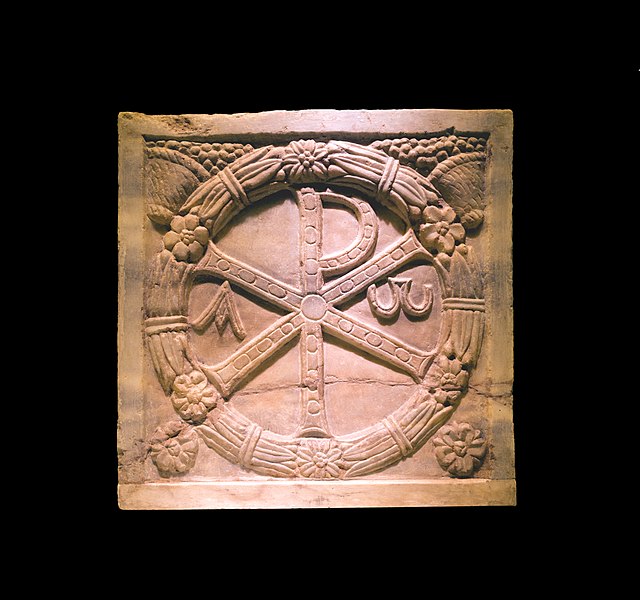The Chi Rho is one of the earliest forms of the Christogram, formed by superimposing the first two (capital) letters—chi and rho (ΧΡ)—of the Greek ΧΡΙΣΤΟΣ in such a way that the vertical stroke of the rho intersects the center of the chi.
Missorium depicting Emperor Constantine the Great's son Constantius II accompanied by a guardsman with the Chi-Rho depicted on his shield (at left, behind the horse).
This coin of Crispus, son of Constantine, with a chi rho on the shield (struck c. 326) shows that the symbol mentioned by Lactantius and Eusebius was a chi rho.
The so-called "Chrismon of Saint Ambrose" (Chrismon Sancti Ambrosii), on display on the eastern wall of Milan Cathedral, a Chi-Rho combined with Alpha and Omega in a circle. According to Landulf of Milan (12th century), it was used by Saint Ambrose to introduce the catechumens to the mysteries of the Christian faith (whence it was called "oracle" or chresmos of St. Ambrose, written by Landulf as crismon, whence the later Neo-Latin term for the Chi-Rho symbol).
The Chi-Rho symbol ☧, Catacombs of San Callisto, Rome.
A Christogram is a monogram or combination of letters that forms an abbreviation for the name of Jesus Christ, traditionally used as a religious symbol within the Christian Church.
Chi-Rho symbol with Alpha and Omega on a 4th-century sarcophagus (Vatican Museums)
A Chi Rho combined with Alpha and Omega, in 1669 labelled Chrismon Sancti Ambrosii, Milan Cathedral
IHS Christogram embossed on an 1864 leather-bound King James Bible
Intertwined IHS monogram, Saint-Martin's Church, L'Isle-Adam, Val-d'Oise







